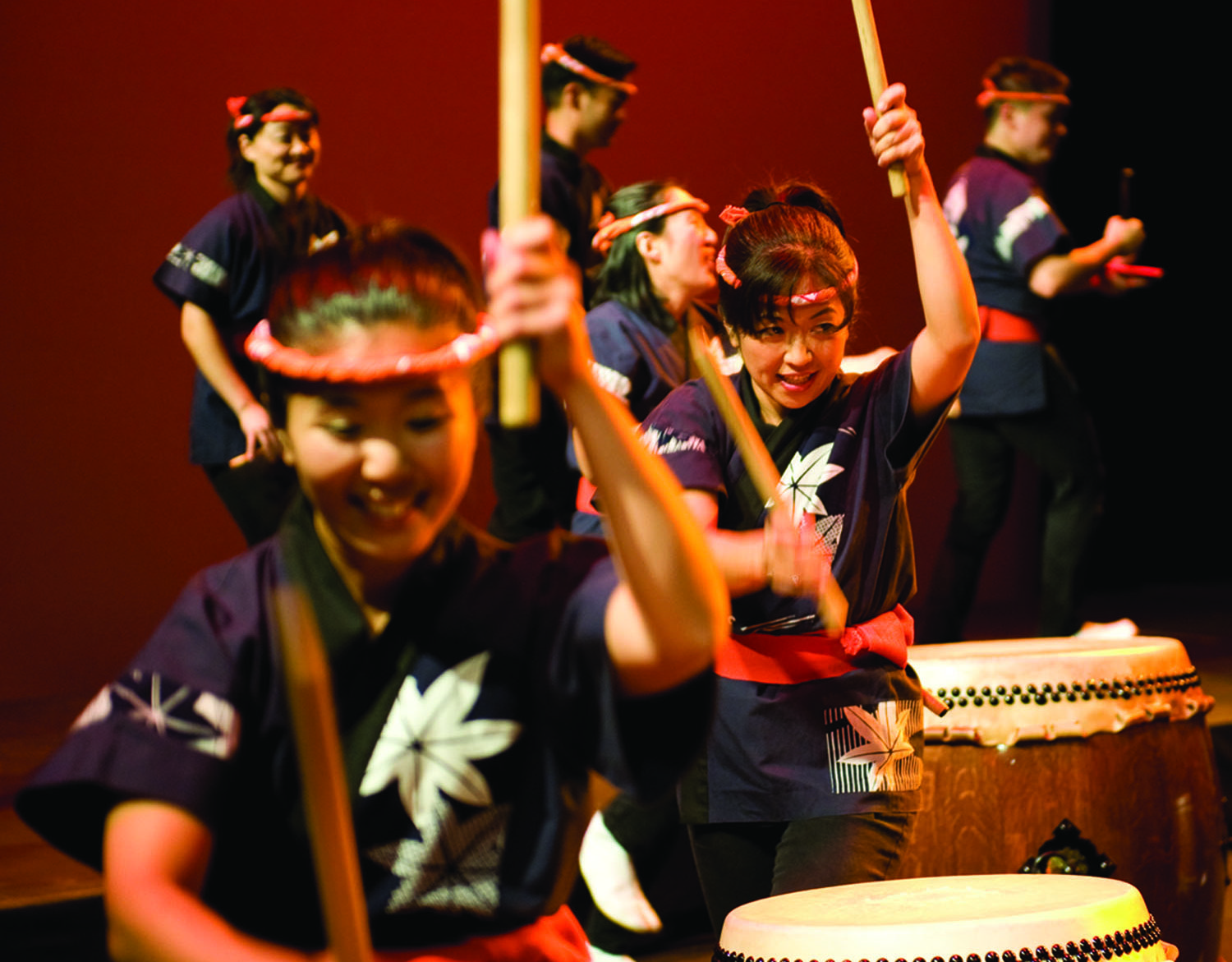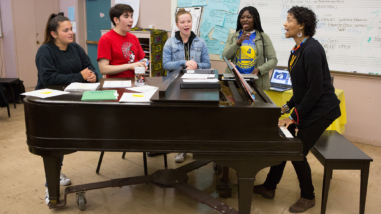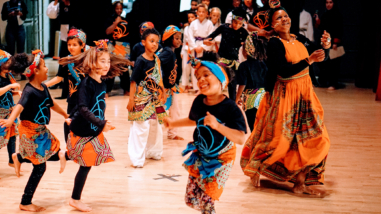San Jose Taiko (SJT), a grantee of the Hewlett Foundation’s Performing Arts Program since 2004, is a professional performance company that has mesmerized audiences with the powerful and propulsive sounds of the taiko. Inspired by traditional Japanese drumming, SJT advances the art form of taiko by connecting people through cultural understanding, artistic expression and rhythmic heartbeat. In 2013 and 2015, the group received organizational effectiveness grants, in addition to general operating support, for targeted capacity-building. Executive director Wisa Uemura explains how the group is using these funds to take SJT to the next level of artistic and organizational excellence.
First, can you tell us a bit more about San Jose Taiko, and taiko itself?
Taiko is the Japanese word for drum. In North America, this term is now used to describe both the Japanese drum itself and the young art form of kumidaiko — ensemble drumming with Japanese drums — which evolved in Japan in the late 1950s. Since its founding in 1973, SJT has always considered itself to be a contemporary ensemble, taking inspiration from the Japanese roots of taiko but also drawing from other influences of music and movement to create a distinct style that many have deemed “dancing with drums.” As the third group to form outside of Japan, SJT is recognized as a pioneer in contemporary taiko and has contributed to the growth of the art form to more than 300 groups across North America today.
How would you describe your mission?
SJT is dedicated to advancing the taiko art form through creating innovative compositions and productions that are reflective of its membership; increasing the general public’s knowledge of taiko and its root culture; and developing the depth and breadth of skills within the ever-expanding taiko community. SJT’s programs reach more than 70,000 people each year, including nearly 15,000 Bay Area students.
Central to our artistic vision is a deep commitment to serving a diverse range of local, regional, national and international communities. SJT’s strength lies in the accessibility of its music and artistry appealing to something on the basic human level in all of us. Through taiko, we encourage cultural pluralism as a gateway to better communication, open-mindedness and connection. Exploring and participating in the arts helps us grow, find and share our voice, promote our well-being and contribute to our happiness.
OE grants from the Hewlett Foundation are used by organizations to bring in external consultants that can help in areas such as fundraising, leadership transitions and strategic planning. What was the purpose of the capacity-building grants you received?
The Organizational Effectiveness (OE) grant that was awarded to SJT in 2013 was for an operational assessment, to analyze the organization’s operations at that time with the goal of strengthening organizational infrastructure and increasing SJT’s fiscal health and sustainability over time. The assessment recommended that SJT should be unified at all levels — board, staff, and performers — with a clear organizational vision and that SJT was financially healthy but still vulnerable unless we found the means to increase capacity of our people, time and funding resources.
The 2015 grant, which is currently underway, is focused on board development. This grant is being used to assess the skills of the current board of directors as well as provide training and development opportunities for the group. The goal is to build the board’s capacity to increase their ability to advocate and fundraise on behalf of SJT, and set the foundation for an upcoming capital campaign.
How is this work progressing? What’s going well? Have there been any surprises?
Although these were two OE projects awarded years apart, the work is highly interrelated. With the financial and informational support provided by the OE grants, SJT has been able to implement a strategic framework unifying the organization at all levels with regards to our vision, mission, goals, beliefs, role, desired outcomes, values and principles. We’ve also been able to hold annual board retreats that are focused on refining our organizational vision and updating the strategic framework, and prioritize continued capacity building.
All of the above has helped SJT to base decisions on a shared vision and mission and retain flexibility to take advantage of opportunities or adapt to changing circumstances. It has also improved board and staff engagement and interaction, and resulted in stronger infrastructure, especially focused on financial monitoring.
This work has made us realize that nothing is sacred including leaders, long-standing programs, or core assumptions that have never been questioned. Everything is negotiable as we best allocate our most valuable resources — time, people, financial assets and reputation.
Do you have any lessons learned for other performing arts organizations that are going through a similar organizational challenge?
Utilizing consultants’ expertise can be an efficient and effective approach to learning about best practices and what other similar organizations are experiencing. That said you shouldn’t discount your organizational strengths and knowledge. Work with your consultants to create a process that works for your group culture and values. Stay true to your mission and values, build cross-sector relationships, reach beyond what you know, and become comfortable with being uncomfortable.

 Higashi Design
Higashi Design


